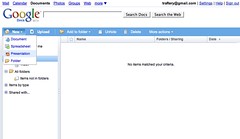The Thai Stem massage worked its magic…
Today will test whether the knots of tension will return. We are off to go zip-lining and white water rafting over the Kicking Horse River.
Zip-lining is really quite simple, after you attach all types of safety harnesses and the zip-line roller. Sit down in the harness, the ripcord is pulled and off you go- flying through the air. Arms out to slow down. Torpedo style to speed up. Raise your legs up at the end as a brake slows you down to a stop. The ride is both fun and exhilarating.
BubbleShare: Share photos - Powered by BubbleShare
Zip-lining side-by-side, it is fun to see who will be first. But, it is clear that weight is the deciding factor. The one who most needs to go on a diet always wins!
The last zip-line ride takes requires a climb to the top of a tower. From there we sail through the air, across the Kicking Horse River where we spot rafts out on the river- our next stop!
There are several raft companies on the river. We selected the
Kootenay Raft Company for our afternoon ride. With the glacier water in the river running at about two degrees above a slushie, we prepare ourselves by dressing in a wet suit, polar fleece jacket, followed by a water repellant jacket which velcros tightly at the neck in hopes of keeping the frigid water from trickling down our backs. Add in wet suit boots, a helmet, and a paddle and we are ready to brave the rapids. Standing by the water’s edge, all rafters on the trip are instructed with demonstrations in safety guidelines and in what to do if you happen to fall overboard- clearly something I DO NOT WANT TO HAPPEN TO ME!
We group ourselves into three boats and the raft trip begins slowly, as our guide, Pierre, works to teach six independent rafters how to paddle, follow commands, and work together. He begins by clearly explaining what is expected. Having rafted before, much of this is not new to our family, but it is new to the family that is rafting with us. First, let me make it clear, that it is the experienced guide that will make our trip a success. He will be the one that helps us navigate the river with his knowledge of the river and the water. Without him, all of us would be in the river or would simply not make it down the river. We are to follow every command he gives to ensure our safety and enjoyment of the trip. Within the first few commands, it is clear that the young boy sitting in front of me, Andy, is not following the commands of the guide. When the guide calls ‘that is enough’ or ‘take a rest’, he continues to paddle. He sticks his paddle into the water and paddles when he is not asked to paddle. A small rapid sends him jumping to the middle of the boat. How the guide handles this is fascinating to observe. Initially, Pierre provides directions to all of the rafters in the boat, explaining what needs to be done. In a second attempt, he comes to the front of the boat and demonstrates to the young man, Andy, and my son how they should sit, wedge their foot for safety and paddle. As the raft trip continues, Pierre then becomes more directive, specifically stating that the two in the front need to watch each other to ensure that they are paddling at the same time. Each rower behind them should do the same. At one point, Pierre, directs his comments directly to Andy. Using a slight joking tone, he questions, “What are you doing quitting on me up there? Are you getting tired?” As we maneuver the raft down the river, Pierre laments that he feels that he is usually very precise, but is missing about fifty percent of what he is steering for and aiming for us to experience. How like a teacher to feel the lack of success as a personal failing. At one point, Pierre suggests that we give someone else a chance in the front, nodding to Andy’s brother Ned. But, Ned will have nothing of it. Nothing seems to be working.
The entire time, the teacher voice in me is screaming to come out. How is it that Andre is not seeing the situation in the same way? He does not appear to even recognize that he is not meeting the expectations of the guide. He has not absorbed the idea that this must be a coordinated effort. After Pierre calls for us to stop paddling once again and repeats the command again with no response from Andy, I find that I am unable to hold it in any longer. I speak my only sentence about the situation to Andy, “He doesn’t want you to paddle now.” He finally stops.
Now shall I add in that his mother breaks into humming and singing everytime the action on the rapids gets exciting?
Truly, the rapids were wonderful. We rafted through class 2, class 3, and class 4 rapids. The exhilaration and adrenaline of paddling your way through challenging rapids with icy water splashing and soaking you was thrilling. It is because of our talented and experienced guide Pierre that we were able to have such an amazing experience. His calm, yet determined and differentiated, approach to guiding his rafters was masterful. His understanding and ability to adjust his guiding and steering to compensate for the uneven paddling of his rafters was truly the mark of a master teacher.

![Reblog this post [with Zemanta]](http://img.zemanta.com/reblog_e.png?x-id=6f4e3653-ef06-48be-a8e7-386849b9ce3c)

![Reblog this post [with Zemanta]](http://img.zemanta.com/reblog_e.png?x-id=9badb7c8-c4ee-4ddb-81ea-03ccc5e11260)

![Reblog this post [with Zemanta]](http://img.zemanta.com/reblog_e.png?x-id=b5f9fdcb-e435-4d90-948c-920ff1d26109)

![Reblog this post [with Zemanta]](http://img.zemanta.com/reblog_e.png?x-id=184d10a1-14a7-4b57-a535-3f310378544b)





















